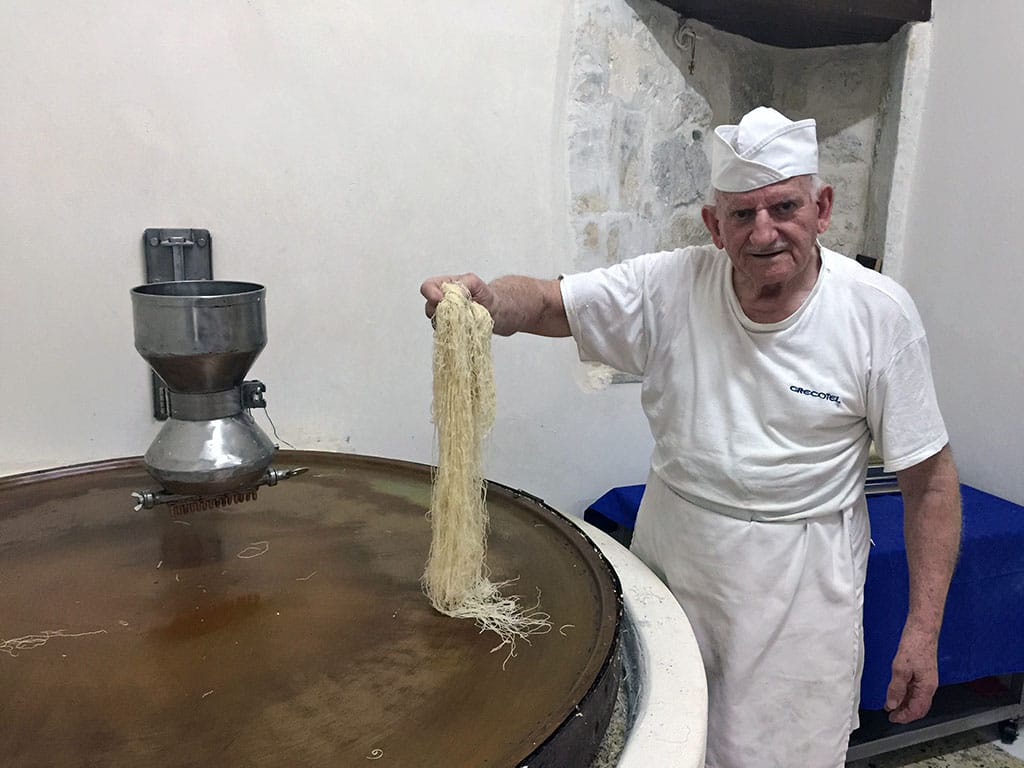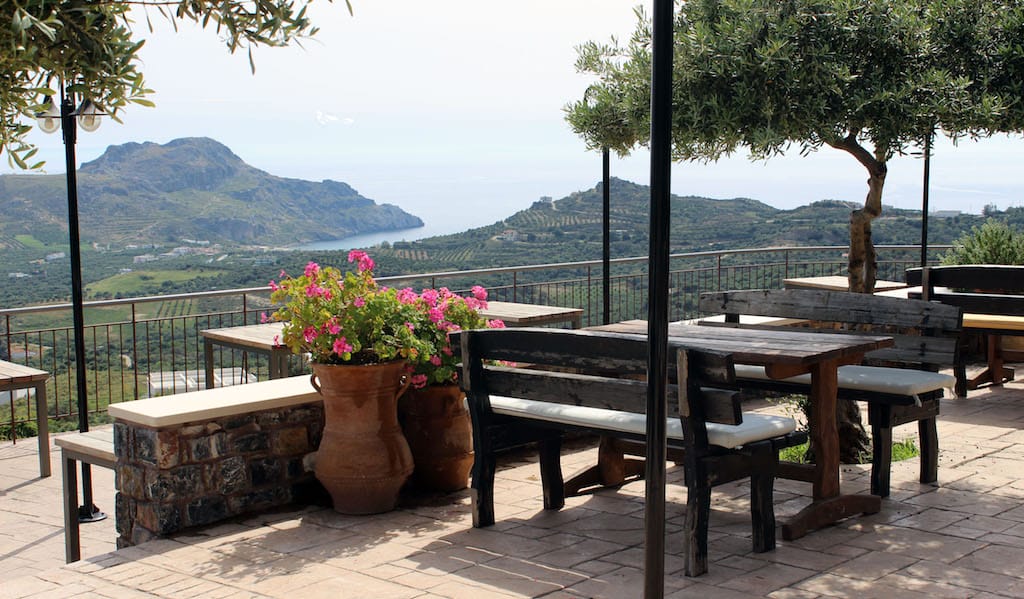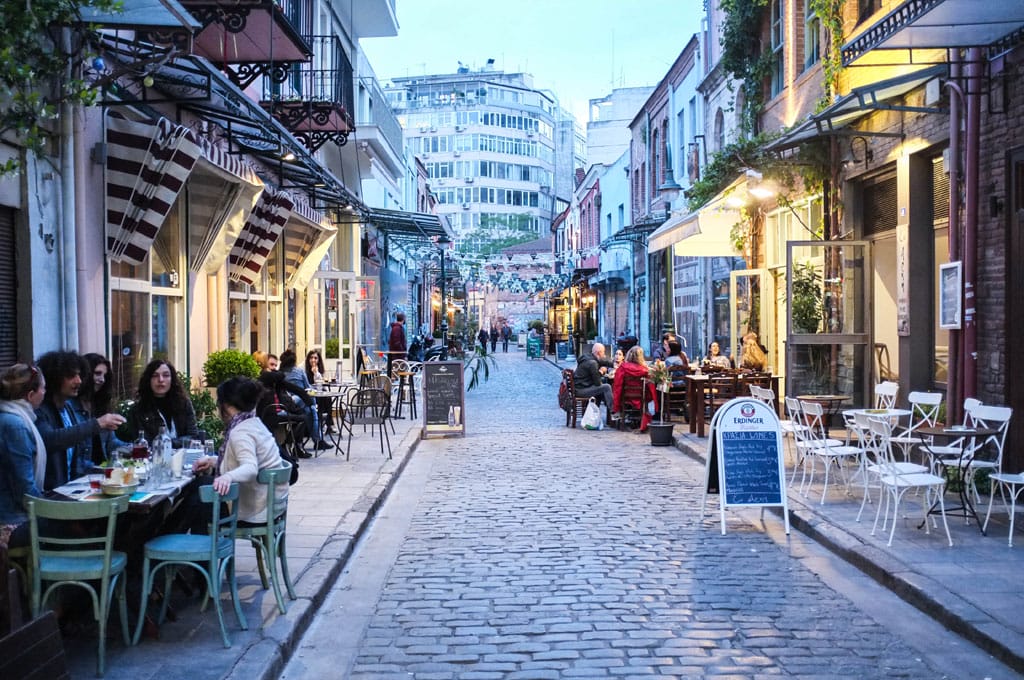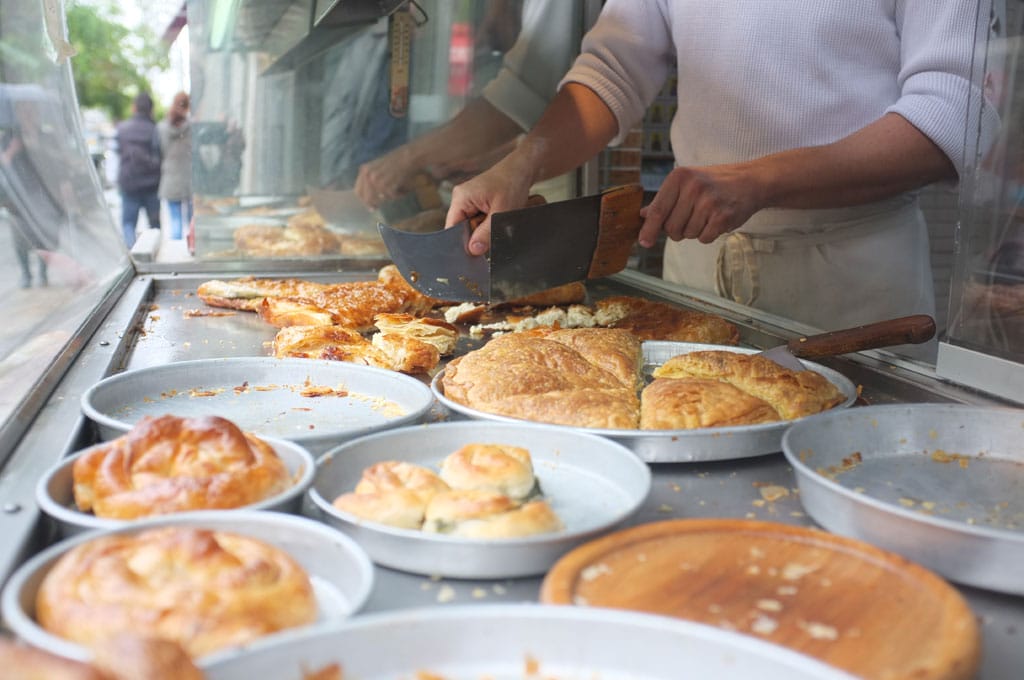Each morning, 82-year-old Giorgos Chatziparaschos’s bicycle pedals clank and echo down the cobblestone streets of the Venetian-era port city Rethymnon, on the island of Crete. For almost 60 years, he’s parked his bike in front of a 17th-century building where a simple hand-painted sign reveals his family name and his family business.
By eight o’clock he has donned his apron and hat, and with the steely determination that underlies his work ethic, he begins to roll out the dough.
Chatziparaschos is one of the only pastry makers in Greece specializing in handmade kataifi. The traditional phyllo pastry looks like shredded wheat, with strands as thin as vermicelli. In its final form, it is baked into traditional syrupy Greek desserts drenched in honey, including a dessert that goes by the same name, as well as baklava and various types of cookies. Sprinkled with the right balance of cinnamon and chopped nuts, kataifi is one of Greece’s most loved desserts.
“Pastry has its own rules,” Chatziparaschos says, and the rules he abides by are special to his dessert workshop, a whitewashed, high-ceilinged room with a large table at the center for preparing dough. On a table in another corner, the final products are displayed for sale. Faithfully managing the cashier as she wraps and arranges the boxed sweets is Katerina, Chatziparaschos’s loyal business partner and wife of 50 years.
While the ingredients are simple – flour, water, and some salt – the proportions according to Chatziparaschos took years of trial and error.
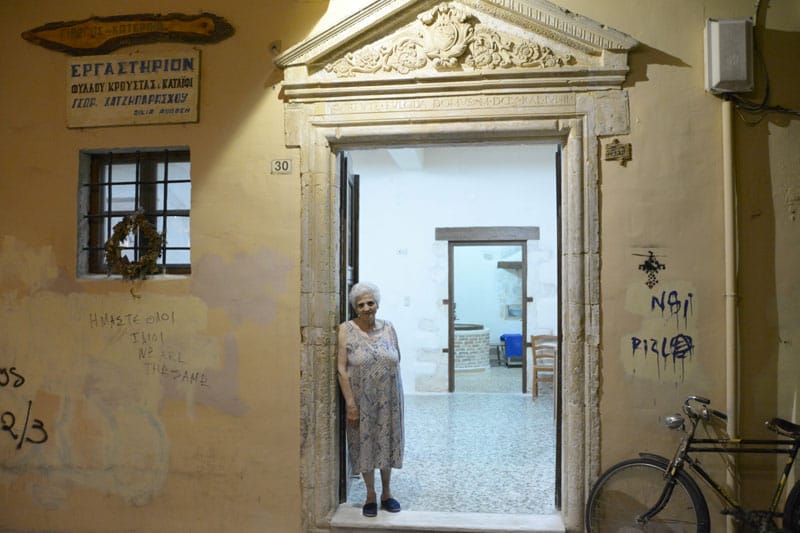
He creates a fluid mixture that he drops in motion into a special machine that sits in a back room, a hot copper pan that doesn’t stop spinning. Over gas flames, the equipment helps him create hundreds of thin baked kataifi strings. With quick and sure movements like a one-man assembly line, Chatziparaschos pulls and pops dough, creating the right dimensions for the optimum result.
He points to a few German and Greek newspaper articles pinned to a wooden board, each one documenting how his little workshop has been a popular stop for tour groups visiting Rethymnon. However, as Katerina explains, it’s local word of mouth that has gotten them by. The only extent of their “marketing” efforts is the warm and inviting smell of her husband’s dough wafting out the door into the centuries-old harbor town.
“Syrup, nuts, lots of love and affection is the basis for the best natural phyllo dough,” Chatziparaschos says. “This is what people have come to know, why they come back for more and what I have taught my family.”
Chatziparaschos’s son, Paraskevas, an engineer, has decided to take over the kataifi business. His grandsons, 22-year-old Stelios, who is studying to be a teacher, and 16-year-old Giorgos, help every summer. Still, Chatziparaschos says he worries about the future of the workshop, which must compete with the price and speed of mass-made Greek desserts. He adds that Greece’s current economic crisis hasn’t helped business either. Neither stops him from moving forward.
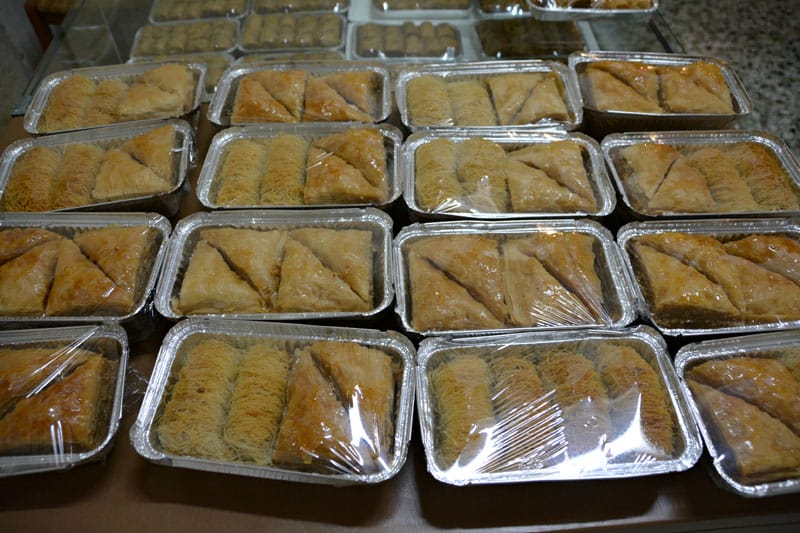
“People tell me I shouldn’t work anymore. The doctor says I shouldn’t bike so much and to relax, but I am a bit stubborn,” says Chatziparaschos, his gray eyes wrinkling as he lets out a chuckle. “As for this job, what can I say but that I love this job.”
He adds, with feeling: “I can’t be away from my kataifi yet… No, I cannot part with it yet.”
So every evening, at eight o’clock, he closes up the workshop with Katerina. She begins her usual walk home and he gets back on his bicycle.
He’ll be back in the morning.
Native New Yorker Marissa Tejada is an author, travel writer and freelance journalist based in Athens, Greece. She also shares her travel and food experiences throughout Greece and Europe on her blog, Travel Greece, Travel Europe.
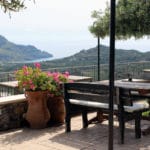 July 26, 2017 CB on the Road
July 26, 2017 CB on the Road
There’s something special about Crete, Greece’s biggest island. The country’s most […] Posted in Athens June 29, 2016 CB on the Road
June 29, 2016 CB on the Road
Thessaloniki, the capital of Greek Macedonia and the country’s second largest metropolis […] Posted in Athens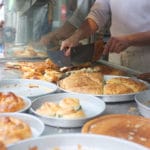 June 2, 2021 CB on the Road
June 2, 2021 CB on the Road
Like so many other Greek specialties, bougatsa has a long history, in this case one that […] Posted in Athens
Marissa TejadaMarissa Tejada
Published on September 06, 2016
Related stories
July 26, 2017
AthensThere’s something special about Crete, Greece’s biggest island. The country’s most fertile region, it has a long history of food and wine production that stretches back to the Bronze Age, making Crete one of the most interesting culinary destinations in Europe. Bordered by the Aegean Sea to the north and the Libyan Sea to the…
June 29, 2016
AthensThessaloniki, the capital of Greek Macedonia and the country’s second largest metropolis after Athens, 500 km to the south, is a youth-loving, vibrant city that never sleeps – and always eats. Most locals here are friendly, laid-back, natural-born foodies who love going out and enjoying good wine and tsipouro. It’s a city with a very…
June 2, 2021
AthensLike so many other Greek specialties, bougatsa has a long history, in this case one that stretches all the way back to Byzantine times. Bougatsa is mainly a breakfast pie with a phyllo pastry made of flour, softened butter and oil that requires a great deal of skill to prepare. This pie is made and…







































